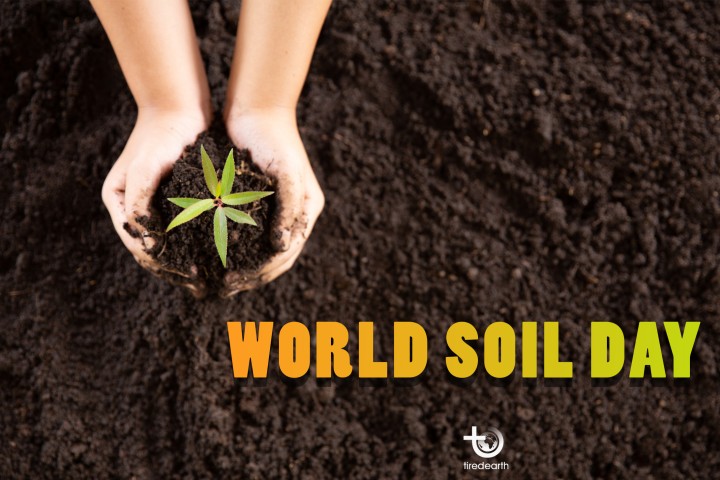Save Our Food Production by Conserving the Soil

The Food and Agriculture Organization of the UN (FAO) Conference, in June 2013, endorsed World Soil Day, and requested official adoption at the 68th UN General Assembly. In December 2013, the 68th session of the UN General Assembly declared 5 December as the World Soil Day.
This year, by addressing the increasing challenges of soil management, the FAO campaign "Stop soil erosion, Save our future" aims to raise awareness of the importance of sustaining healthy ecosystems and human well-being. By encouraging people around the world to engage in proactively improving soil health, the campaign also aims to raise the profile of healthy soil. If we do not act soon, erosion will; the fertility of soil will continue to be adversely affected in an alarming rate, threatening global food supplies and food safety.
Soil and food production
The ‘soil’ means the natural body covering the earth surface as a thin layer resulting from the transformation or decomposition of rocks and minerals, with organic matter mixed together to become a homogeneous substance. Soil health is important for a healthy food production. It provides essential nutrients, water, oxygen and support to the roots, all elements that favour the growth and development of plants for food production. The soil hosts a big community of diverse organisms that improve the structure of the soil, recycle essential nutrients, and helps to control weeds, plant pests and diseases. Another important aspect is that when soil is healthy, it contributes to mitigate climate change by keeping or increasing soil organic carbon. Soil is the basis of food systems as well as the place where all plants for food production grow. For that reason it is extremely important to preserve soils and to start a global cultural movement which returns to soils the primary importance that they deserve.
Ecosystem services
Soil is the link between the air, water, rocks, and organisms, and is responsible for many different functions in the natural world that we call ecosystem services. These soil functions include: air quality and composition, temperature regulation, carbon and nutrient cycling, water cycling and quality, natural "waste" (decomposition) treatment and recycling, and habitat for most living things and their food. We could not survive without these soil functions.
Different ways to protect the soil
Forest Protection
The natural forest cover in many areas has been decreased due to commercial activity. One of the purposes this cover provided was the protection of the soil. Businesses involved in building can conserve by ensuring these areas are protected.
Soil watering
This is a simple process that provides a lot of benefits to the soil. Watering your soil along with plants and vegetables is important. This helps to not only nourish the soil but to protect it. Moist soil is not in danger of erosion due to wind activity.
Waste management
Poor waste disposal and management pose a huge threat to soil preservation. Approaches such as recycling and re-use can be implemented to reduce land and water pollution that leads to soil degradation. Through recycling and proper waste management, we can minimise the amount of toxic and harmful contaminants that seep into the soil. When effectively implemented, it can dramatically improve the quality and health of the soils.
Restoration of wetlands
Restoration of the wetlands qualifies as one of the most fundamental ways to prevent soil erosion. Wetlands act as natural sponges, allowing for water infiltration and preventing it from washing the soil away. Furthermore, wetlands support impressive ecosystems and biodiversity including birds and other wildlife, and equally aids in preventing water pollution.

